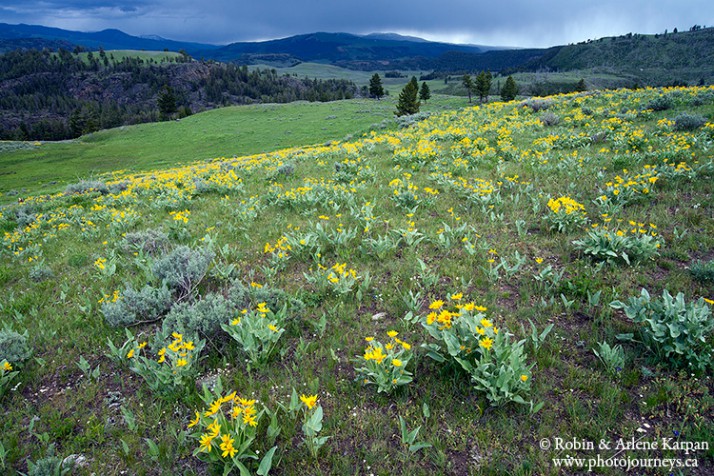
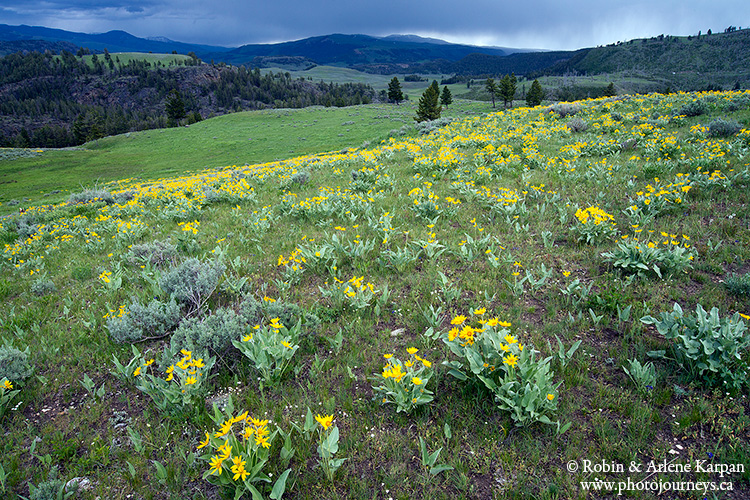
As we discussed in the past three postings, Yellowstone National Park excels as a photography destination. If there is a downside to visiting Yellowstone, it’s the sheer number of people that also find it a great place to visit. Over three million people come every year, the vast majority between June and September. Our preferred style of travel is having the maximum amount of flexibility, to be able to come and go and move around as we see fit. But because of Yellowstone’s popularity, and the limited accommodation and campsites inside the park, some advance planning is necessary. 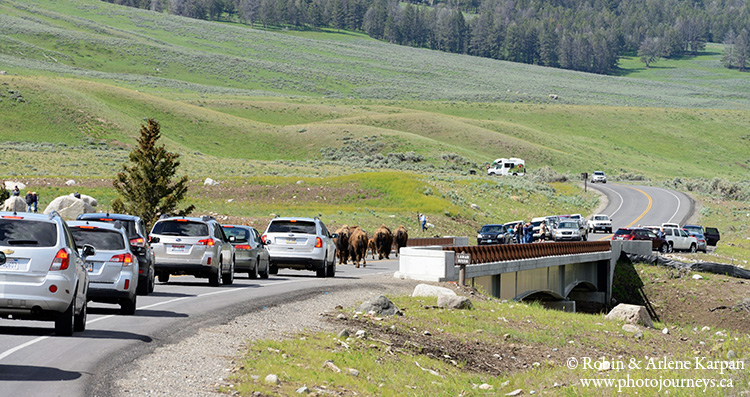
We consider camping the ideal way to visit Yellowstone. Not only does camping allow us to stay in some fantastic places, but it is also a very economical way to see the park. The problem is that a lot of other people have the same idea. In the summer season, every campground fills up every night. There are no overflow sections to campgrounds. When they’re full, they’re full. The only other option is to find camping or other accommodation outside the park. While it is possible to visit the park while staying at bordering communities (Gardiner at the north entrance, or West Yellowstone at the west entrance), this is less than ideal because of the amount of extra driving. Besides, it’s just a lot nicer to stay in the park.
Of the park’s 12 campgrounds, five accept advance reservations (these account for the majority of the sites), while the other seven are first come, first served, and cannot be reserved. When we visited in early June, the non-reserved campgrounds filled up before 9:00 am, so if we wanted to move to another part of the park, we had to be on our way very early. Two campgrounds, Slough Creek and Pebble Creek, both in the Lamar Valley, don’t open until mid-June.
Assuming that you want to visit most parts of the park, and get a good overview of the thermal features plus the main wildlife-rich areas, it’s best to stay in a few different campgrounds. To see the Mammoth Hot Springs area, the Mammoth Campground (non-reserved) is the obvious choice. If you enter from the north, a good strategy is to stay outside the park the night before (there are several nice National Forest campgrounds nearby, for example), then enter in the morning to better the chances of getting a site at Mammoth Campground.
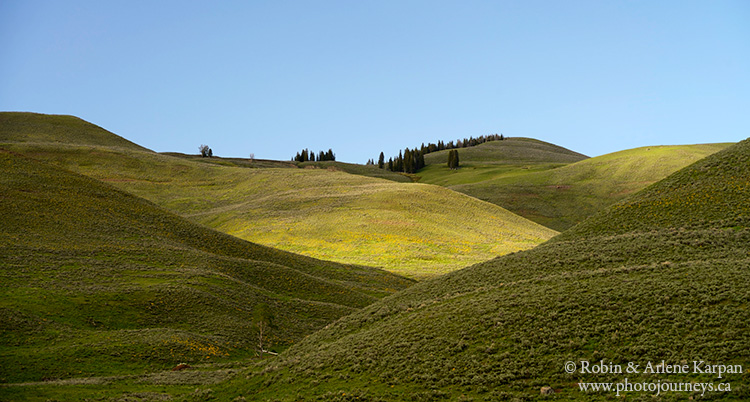
Norris is one of the best situated non-reserved campgrounds. Near the west side of the park, it is in the midst of several thermal areas, and reasonably short drives to the Old Faithful area to the south and to the Grand Canyon of the Yellowstone to the east.
To visit the wildlife-rich Lamar Valley, it’s best to stay as close as possible in order to be out early in the morning. Fortunately, the closest campgrounds are non-reserved, but unfortunately, all of them are small and tend to fill up fast. Slough Creek and Pebble Creek Campgrounds in the valley don’t even open until mid-June, so if you’re visiting earlier, this leaves Tower Falls Campground, with only 31 sites. This was our favourite, nicely situated on a mountain pass near spectacular waterfalls, and a short distance to the start of the Lamar Valley drive. But if you want to stay here, be sure to arrive very early to snag a spot.
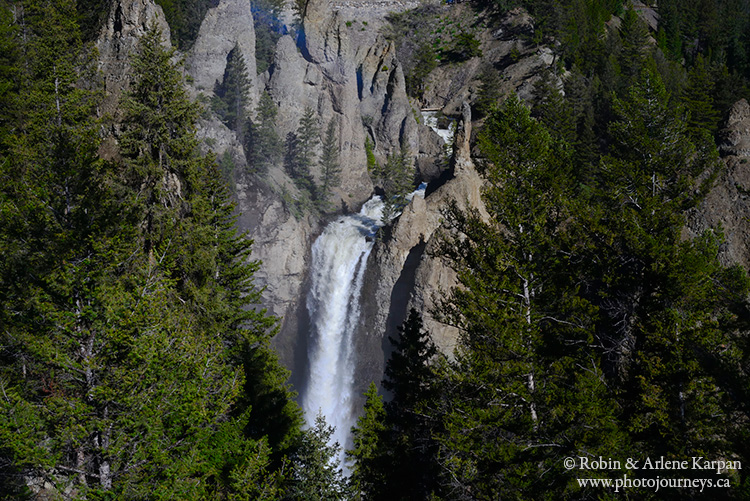
Of course, if you can plan far enough ahead, you can simply book campgrounds in advance. Even if you haven’t booked ahead, you can check with the reservation campgrounds in case there’s cancellations. We managed to get last minute space at the Canyon Village Campground (next to the Grand Canyon of the Yellowstone) because they had a cancellation.
While Yellowstone is open year round, it would be more challenging and definitely more pricey to visit outside of the short summer season. Most campgrounds don’t open until late May or June. Snow storms can occur any month of the year, including mid-summer, so you might face cold weather and the possibility of closed roads due to snow in the shoulder season. We chose early June because it was late enough for most campgrounds to be open but still ahead of the main summer rush. It was quite busy and crowded at that time; we don’t think we would like to be here in July when even more people are around. Also in early June much of the wildlife is still in the valleys and hasn’t yet moved up higher into the mountains.
The park website http://www.nps.gov/yell/index.htm has details on campgrounds and other logistical information to help plan your visit, and numerous guidebooks (including some specifically written for photographers) fill in a lot of the gaps.
Feel free to PIN this article


